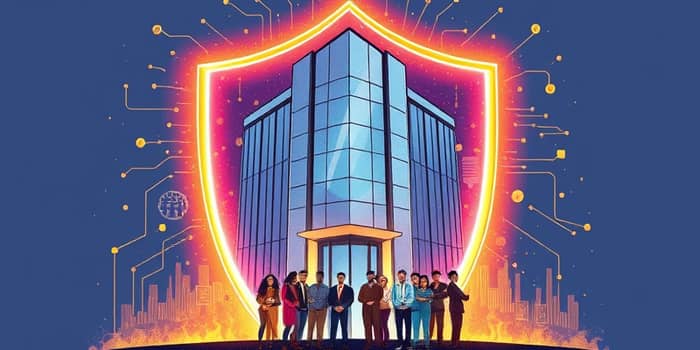In today’s hyperconnected world, any stakeholder: shareholders, employees, customers can shape public perception in an instant. A single misstep echoes across social platforms, leaving lasting impressions that affect every aspect of an organization. Understanding and managing reputational risk is no longer optional—it is a strategic imperative for businesses of all sizes.
This comprehensive guide explores the nature of reputational risk, its sources and consequences, and offers practical frameworks to protect your brand. By weaving together definitions, historical examples, and expert strategies, we aim to empower you to anticipate threats and respond with confidence.
Understanding Reputational Risk
At its core, reputational risk is defined as “anything that can harm the way a company is perceived by its stakeholders.” Unlike operational risk, which emerges from internal process failures, reputational risk can originate independently, driven by external perceptions and unforeseen events. Its unpredictable nature makes it highly unpredictable and hard to quantify, spanning from fleeting negative press to catastrophic brand collapse.
Reputational threats can be grouped into direct, indirect, and peripheral categories. Direct risks spring from a company’s own actions—ethical breaches, regulatory violations, or product failures. Indirect risks arise from employee misconduct or publicized errors by representatives. Peripheral risks involve partners or suppliers whose misdeeds reflect back on your brand.
- Direct risks: Scandals, ethical breaches, regulatory fines.
- Indirect risks: Employee misconduct, representational errors.
- Peripheral risks: Supplier violations, partner organization failures.
- Consumer-driven risks: Viral backlash, negative reviews.
- Environmental/Social: Sustainability missteps, social responsibility lapses.
Consequences of Reputational Damage
The fallout from a damaged reputation can be swift and severe. Organizations often experience a dramatic loss of customer trust and loyalty, which directly impacts revenue and market share. Negative sentiment spreads rapidly in digital ecosystems, making recovery an uphill battle.
Beyond financial loss, reputational damage erodes employee morale, complicates talent acquisition, and strains relationships with investors, partners, and regulators. In extreme cases, companies may face blacklisting, loss of licenses, or even insolvency. The 2015 Volkswagen emissions scandal, for instance, led to billions in fines, plummeting sales, and years-long efforts to rebuild credibility.
Assessing and Monitoring Reputational Risk
Effective risk management begins with stakeholder identification and expectation mapping. Pinpoint customers, employees, investors, regulators, suppliers, and communities, and assess the reputational demands unique to each group. This foundational step clarifies which signals deserve priority monitoring.
Next, establish key risk indicators and metrics to quantify brand health. Consider social sentiment analysis, review volume, Net Promoter Score (NPS), and media tone. Use digital listening tools—brand mention trackers, review aggregators, and CRM dashboards—to maintain continuous vigilance. A robust monitoring program can flag early warning signs before they escalate into crises.
Strategies to Protect Your Brand
Building resilience against reputational threats demands proactive planning and coordinated execution. Develop comprehensive brand guidelines encapsulating your values, mission, and tone of voice. These guidelines serve as the north star for all internal and external communications, ensuring consistency and authenticity.
Next, craft a crisis management plan outlining decision-making hierarchies, escalation paths, and response templates. Speed and transparency are vital—aim to respond to online queries within 24 hours and resolve 70% of issues within a month. Such agility can turn potential disasters into opportunities for positive engagement.
- Establish clear brand values, mission, and tone of voice guidelines.
- Create a crisis response plan with defined roles and workflows.
- Foster internal communication and employee brand advocacy programs.
- Leverage PR and SEO to prioritize positive authoritative content ranks higher than negative press.
Case Studies: Lessons from History
Volkswagen’s emissions scandal remains a cautionary tale. After admitting to software manipulation in diesel vehicles, VW faced over $30 billion in fines and had to undertake a multi-year image rehabilitation campaign. Their journey highlights the importance of swift admission, transparent communication, and long-term investment in trust rebuilding.
Similarly, companies confronted with supply chain labor violations have learned that outsourcing brand risk without oversight can backfire. A single exposé can trigger boycotts, regulatory probes, and enduring stigma. These examples underscore the need for comprehensive partner due diligence and collaborative remediation strategies.
Challenges and Future Outlook
As digital platforms evolve, reputational risk becomes more fluid and complex. Deepfakes, misinformation campaigns, and instant viral trends create unpredictable vectors of attack. Organizations must adopt dynamic monitoring, combining AI-based threat detection with human-led analysis, to stay ahead of emerging threats.
Moreover, stakeholder expectations around sustainability and social responsibility continue to rise. Brands that ignore environmental and social governance expose themselves to amplified risk from advocacy groups and activist investors. The future demands integrated reputation strategies that fuse ethical commitments with operational excellence.
Conclusion and Key Takeaways
Safeguarding your brand reputation is a continuous, organization-wide endeavor. By understanding the multifaceted nature of reputational risk, establishing rigorous monitoring systems, and deploying proactive strategies, you can transform potential vulnerabilities into opportunities for differentiation and growth.
- Define reputational risk and recognize its financial and human impact.
- Identify direct, indirect, and peripheral risk sources early.
- Implement robust monitoring with KPIs like sentiment score and NPS.
- Develop crisis plans with clear roles and rapid response targets.
- Leverage PR, SEO, and positive content to shape your narrative.
- Invest in ethical governance and partner oversight to prevent external shocks.
References
- https://www.thecorporategovernanceinstitute.com/insights/lexicon/what-is-reputational-risk/
- https://www.papirfly.com/blog/brand-management/brand-reputation-management-strategies/
- https://www.metricstream.com/learn/reputational-risk.html
- https://broadly.com/blog/reputation-management-strategy/
- https://www.indeed.com/career-advice/career-development/reputation-risk
- https://sproutsocial.com/insights/brand-reputation-management/
- https://www.unit21.ai/fraud-aml-dictionary/reputational-risk
- https://topworkplaces.com/company-reputation-management-strategies/










